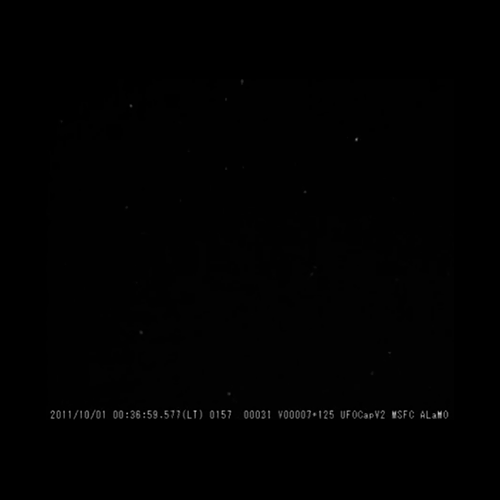😮Seriously?!?
😮Seriously?!?





lmao😂/smh🙄
More Posts from Hottiegeekgirl2014 and Others
😆🤣




As he throws her to the ground.
Worth a reblog

reblog and make a wish! this was removed from tumbrl due to “violating one or more of Tumblr’s Community Guidelines”, but since my wish came true the first time, I’m putting it back. :)
Too damn cute! 😆


Today is the twelth day of Hiddle-Mas! And today is open to international followers in addition to US!
So basically, Amazon is not cooperating and after 48 hours I’ve yet to receive the link to the giveaway for the TNM novel, so, to make up for that, there will be two winners for this prize!
Today’s prize is a High-Rise decal decal made by me, in a color and size of your choice. This can go on your car, your laptop, your journal, your favorite tervis, basically anything. I have a very wide range of colors so I probably have your fav!
To be entered into today’s giveaway:
Please be following me.
Reblog this post until 11:59PM EST TODAY (December 12). Likes won’t count. Remember if you’ve already won, you can’t win again.
Make sure your ask box is open so I can message you, and please be willing to give your address.
That’s it! Good luck guys!!
How Airglow Can Help Us Understand the Sun’s Influence on Earth
You may have seen the famous blue marble or pale blue dot images showing Earth from 18,000 and 3.7 billion miles away, respectively. But closer to home — some 300 miles above Earth’s surface — you might encounter an unfamiliar sight: vibrant swaths of red and green or purple and yellow light emanating from the upper atmosphere.
This light is airglow.

Airglow is created when atoms and molecules in the upper atmosphere, excited by sunlight, emit light to shed excess energy. Or, it can happen when atoms and molecules that have been ionized by sunlight collide with and capture a free electron. In both cases, these atmospheric particles emit light in order to relax again. The process is similar to how auroras are created, but while auroras are driven by high-energy solar wind, airglow is energized by day-to-day solar radiation.

Since sunlight is constant, airglow constantly shines throughout Earth’s atmosphere, and the result is a tenuous bubble of light that closely encases our planet. Its light is too dim to see easily except in orbit or on the ground with clear, dark skies and a sensitive camera — it’s one-tenth as bright as the light given off by all the stars in the night sky.

Airglow highlights a key part of our atmosphere: the ionosphere. Stretching from roughly 50 to 400 miles above Earth’s surface, the ionosphere is an electrified layer of the upper atmosphere generated by extreme ultraviolet radiation from the Sun. It reacts to both terrestrial weather below and solar energy streaming in from above, forming a complex space weather system. Turbulence in this ever-changing sea of charged particles can manifest as disruptions that interfere with Earth-orbiting satellites or communication and navigation signals.

Understanding the ionosphere’s extreme variability is tricky because it requires untangling interactions between the different factors at play — interactions of which we don’t have a clear picture. That’s where airglow comes in. Each atmospheric gas has its own favored airglow color, hangs out at a different height and creates airglow by a different process, so we can use airglow to study different layers of the atmosphere.

Airglow carries information on the upper atmosphere’s temperature, density, and composition, but it also helps us trace how particles move through the region itself. Vast, high-altitude winds sweep through the ionosphere, pushing its contents around the globe — and airglow’s subtle dance follows their lead, highlighting global patterns.

Two NASA missions take advantage of precisely this effect to study the upper atmosphere: ICON — short for Ionospheric Connection Explorer — and GOLD — Global-scale Observations of the Limb and Disk.
ICON focuses on how charged and neutral gases in the upper atmosphere behave and interact, while GOLD observes what drives change — the Sun, Earth’s magnetic field or the lower atmosphere — in the region.

By imaging airglow, the two missions will enable scientists to tease out how space and Earth’s weather intersect, dictating the region’s complex behavior.
Keep up with the latest in NASA’s airglow and upper atmosphere research on Twitter and Facebook or at nasa.gov/sunearth.
Make sure to follow us on Tumblr for your regular dose of space: http://nasa.tumblr.com.
Mine is an A20 ring set inside A17...my best guy friend calls them “dragon eyes” lol 😆

What’s your eye color number?




pens @ sharks | 01.15.19
i didn’t watch 17 (and soon 18) interconnected superhero films just for tony stark to get smushed by a ugly alien grape in the 19th, reblog if you agree
Reading this post on the job @1:30 am (CST) and laughing so much harder than I probably should be right now 🤣🤣🤪🤪😂😂
So i need a new bed, so I’m looking up alternatives
and im like

Okay a bit weird but still nice

lol #random

Whos bed is this??? Gumbys????

your going to fucking die when that rolls away

WHDAJDNAJKDBWHFLSJFHDJKDKfLSafjSLANSAND

WHY DOES THIS ONE HAVE A DUNGEON

GRapes? Grapes.

Are u secretly a clownfish?

I DONT KNOW WHATS GOING ON ANYMORE
🎉🎉😊🎂🍺








Happy 35th birthday Christopher Robert Evans (born June 13, 1981)
-
 unimaginativeusername17 liked this · 1 month ago
unimaginativeusername17 liked this · 1 month ago -
 katiebttns reblogged this · 1 month ago
katiebttns reblogged this · 1 month ago -
 vibratepositiv reblogged this · 2 months ago
vibratepositiv reblogged this · 2 months ago -
 scoutbokmal20 reblogged this · 3 months ago
scoutbokmal20 reblogged this · 3 months ago -
 scoutbokmal20 liked this · 3 months ago
scoutbokmal20 liked this · 3 months ago -
 inthesuitcase liked this · 3 months ago
inthesuitcase liked this · 3 months ago -
 ziggycas liked this · 4 months ago
ziggycas liked this · 4 months ago -
 ollievion liked this · 4 months ago
ollievion liked this · 4 months ago -
 omnn liked this · 4 months ago
omnn liked this · 4 months ago -
 theridiidae reblogged this · 4 months ago
theridiidae reblogged this · 4 months ago -
 sofiaottoman reblogged this · 4 months ago
sofiaottoman reblogged this · 4 months ago -
 sofiaottoman liked this · 4 months ago
sofiaottoman liked this · 4 months ago -
 lightwit reblogged this · 4 months ago
lightwit reblogged this · 4 months ago -
 justanotherbookwyrm liked this · 4 months ago
justanotherbookwyrm liked this · 4 months ago -
 archeleon liked this · 4 months ago
archeleon liked this · 4 months ago -
 watsdaughter liked this · 4 months ago
watsdaughter liked this · 4 months ago -
 procrastinatingfeminist reblogged this · 4 months ago
procrastinatingfeminist reblogged this · 4 months ago -
 ashstatic liked this · 4 months ago
ashstatic liked this · 4 months ago -
 drunkrabbitsobs liked this · 4 months ago
drunkrabbitsobs liked this · 4 months ago -
 foxglovedreaming liked this · 4 months ago
foxglovedreaming liked this · 4 months ago -
 evilista reblogged this · 4 months ago
evilista reblogged this · 4 months ago -
 lankyhorologist liked this · 4 months ago
lankyhorologist liked this · 4 months ago -
 shdwsilk liked this · 4 months ago
shdwsilk liked this · 4 months ago -
 angryessays liked this · 4 months ago
angryessays liked this · 4 months ago -
 birogok liked this · 4 months ago
birogok liked this · 4 months ago -
 niaiseux liked this · 4 months ago
niaiseux liked this · 4 months ago -
 uselessdogboy reblogged this · 4 months ago
uselessdogboy reblogged this · 4 months ago -
 uselessdogboy liked this · 4 months ago
uselessdogboy liked this · 4 months ago -
 alex51324 reblogged this · 4 months ago
alex51324 reblogged this · 4 months ago -
 beboots reblogged this · 4 months ago
beboots reblogged this · 4 months ago -
 phillybootboy liked this · 5 months ago
phillybootboy liked this · 5 months ago -
 fuckingonthesubway liked this · 5 months ago
fuckingonthesubway liked this · 5 months ago -
 yetibattlerage reblogged this · 5 months ago
yetibattlerage reblogged this · 5 months ago -
 annak3s33 liked this · 6 months ago
annak3s33 liked this · 6 months ago -
 annacuklg liked this · 6 months ago
annacuklg liked this · 6 months ago -
 walwavet liked this · 6 months ago
walwavet liked this · 6 months ago -
 annarm02d liked this · 6 months ago
annarm02d liked this · 6 months ago -
 annaxbr3n liked this · 6 months ago
annaxbr3n liked this · 6 months ago -
 reigenaratakapossessionkink reblogged this · 6 months ago
reigenaratakapossessionkink reblogged this · 6 months ago -
 reigenaratakapossessionkink liked this · 6 months ago
reigenaratakapossessionkink liked this · 6 months ago -
 osmoticcoolness reblogged this · 6 months ago
osmoticcoolness reblogged this · 6 months ago -
 icymorpher reblogged this · 6 months ago
icymorpher reblogged this · 6 months ago -
 brandi927 liked this · 6 months ago
brandi927 liked this · 6 months ago -
 brandi927 reblogged this · 6 months ago
brandi927 reblogged this · 6 months ago -
 impossiblyatomictiger-blog liked this · 6 months ago
impossiblyatomictiger-blog liked this · 6 months ago -
 impossiblyatomictiger-blog reblogged this · 6 months ago
impossiblyatomictiger-blog reblogged this · 6 months ago -
 49kittens reblogged this · 6 months ago
49kittens reblogged this · 6 months ago